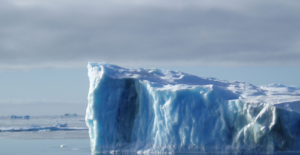Antarctica has been in the headlines the last week – see e.g. the Guardian or Bergens Tidene – as a large group of scientists concluded in Nature that the Antarctic ice sheet has lost 2720 billion of tons of ice since 1992. 2720 billion tons… that’s enough ice to cover all of Norway with almost 8 m of ice… or to rise the mean sea level with 8 mm.
The uncertainty is large, especially for East Antarctica, because it is not easy an easy task to quantify the mass change of Antarctica. Over the years three main techniques have been developed, either building on satellite altimetry (measurements of the height of the ice sheet), gravimetry (measurements of the gravitational pull on satellites) or budget calculations (combining estimates of snowfall with estimates of ice loss at the boundary of the continent) – each with it’s own set of challenges and uncertainties. The author’s have combined results from 24 independent studies, using different methods and models, and the results are unambiguous: Antarctica has been losing mass and the rate of ice loss is accelerating.
Climate is changing; the ice loss is likely to continue and the sea level will continue to rise. It’s scary. I can go back into my office and try to understand more about what role the ocean is playing and about what is happening down south – but I cannot stop it. Not on my own. But maybe, hopefully, we can still do it together, all of us.

